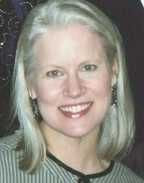
If you count discouraged workers—those who have given up looking for a job—about one in seven American adults are unemployed, not the one in 13 contained in the official unemployment rate of 7.6 percent, released today.
It’s easy to be discouraged in an economy that is losing upwards of half a million jobs a month. At the same time, hiring never drops to zero. What if you don’t have the luxury of waiting for a more welcoming job market? What if the only way you are going to keep body and soul together is to get to work?
That's what I asked Ed McEneny, a longtime professional employment counselor for a large, nationwide firm that shows the laid off, the underemployed, and the never-employed how to increase their chances of getting where they want to go. Here's his take on what it takes:
• Yes, getting a job is tougher today, but people are getting offers. One thing hasn’t changed, no matter what’s happening in the economy: The harder you work, the luckier you get.
• Don’t let your spouse or your mom or your former colleague tell you there are no jobs out there. "Let the market tell you whether it has a place for you," Ed says. You won’t know the answer until you’ve spent some quality time in the job-search.
• Several Web sites and books will give you the basics of job-hunt behavior—a top-notch resume vs. any old resume; using the Internet to do focused, rather than scattershot, job research; preparing for tough interview questions—as well as provide moral support and tips from others in your situation. To start, you could check out the venerable
“What Color is Your Parachute?” as well as
The Riley Guide and
CareerJournal.
• Tell everyone you know that you’re looking for a job, and be specific about the fields you’re targeting and the skills you’re offering. You’re not asking people for a job, you’re telling them what you’re up to in case they have advice or they know someone who knows someone whose business may need a person with your skills. Such networking is the most effective form of job-hunting--better than on-line listings, career fairs, headhunters, etc. Passive job-hunting (emailing a resume to an online ad) is rarely enough. How many times have you heard: “I sent out a hundred resumes and I didn’t get even one interview!”
• Don’t limit your networking to people in your line of work. Tell everyone—your neighbor, your cousin, your book club—what you’re looking for. Remember, six degrees of separation.
• Don’t limit your networking to conversations, either. Volunteer, which will widen your contacts, keep you active in the world, and perhaps let you show off your skills or further develop a dormant set of skills. Join Toastmasters. Yes, even in the era of email and YouTube, maybe especially in the era of email and YouTube, sharpening your face-to-face communication style and your critical-thinking skills is important. They will help you get the interview, make a good impression in the interview, make you more effective in your next workplace, and widen your network.
You’ve done it all, for as long as you can, and you haven’t gotten the kind of job you're looking for? Go to the sidelines, Ed says, and get a job (or two) that pays the bills while you wait for your field to open up again or while you retool for a field with better prospects.
Whether you’re employed or not, don’t stop networking. In an era when the average adult will change jobs more than 10 times, job-hunting is not just for the unemployed. If you keep yourself out there in the relevant professional organizations, if you make it a point to stay educated and current in your field, if you maintain your connections, it will be that much easier to land on your feet, no matter what happens.
His years of advising the unemployed have sharpened Ed's definition of job security: "Your skills, plus your ability to get your next job."
This market is a wake-up call for all of us, unemployed or not.




